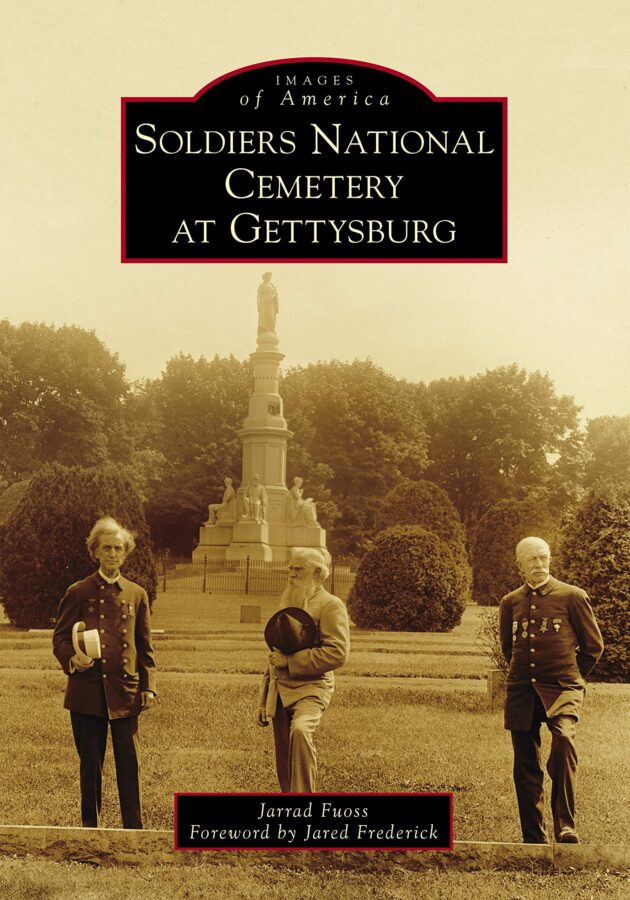“[A]n army marches on its stomach.” Variations of this statement have been attributed to great historical leaders, including Frederick the Great and Napoleon Bonaparte, over the last 150 years. The sentiment certainly held true during the Civil War, during which hundreds of thousands of hungry Union and Confederate soldiers required sustenance on any given day. Below are images that reflect the importance of food to Civil War armies. (All images courtesy of the Library of Congress.)
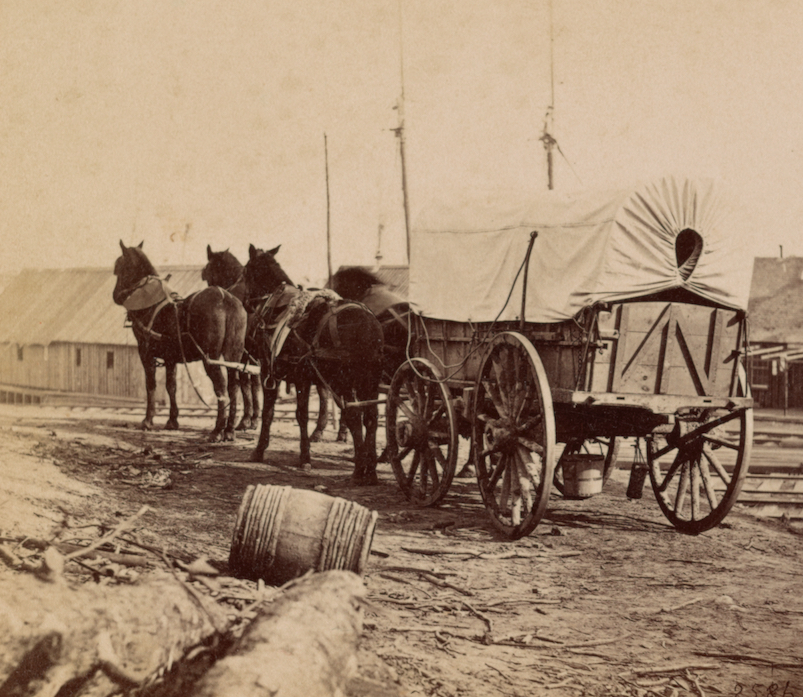
An army wagon heads to the Union commissary depot at City Point, Virginia, in this photo published by E. & H.T. Anthony & Co.
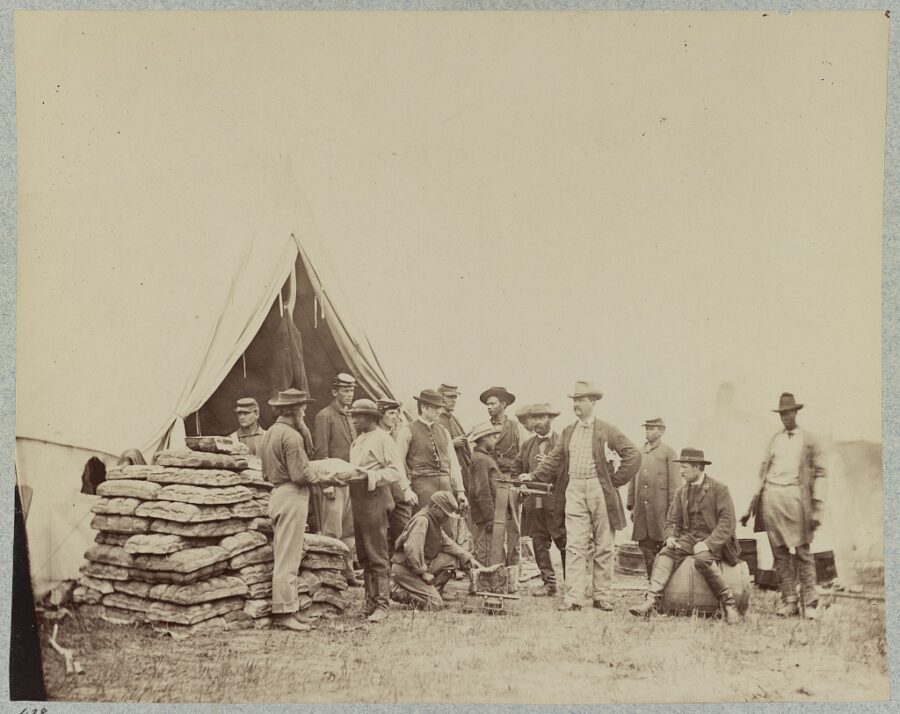
Timothy O’Sullivan took this photo of the commissary tent at the headquarters of the Army of the Potomac, near Fairfax Court House, Virginia, in June 1863.
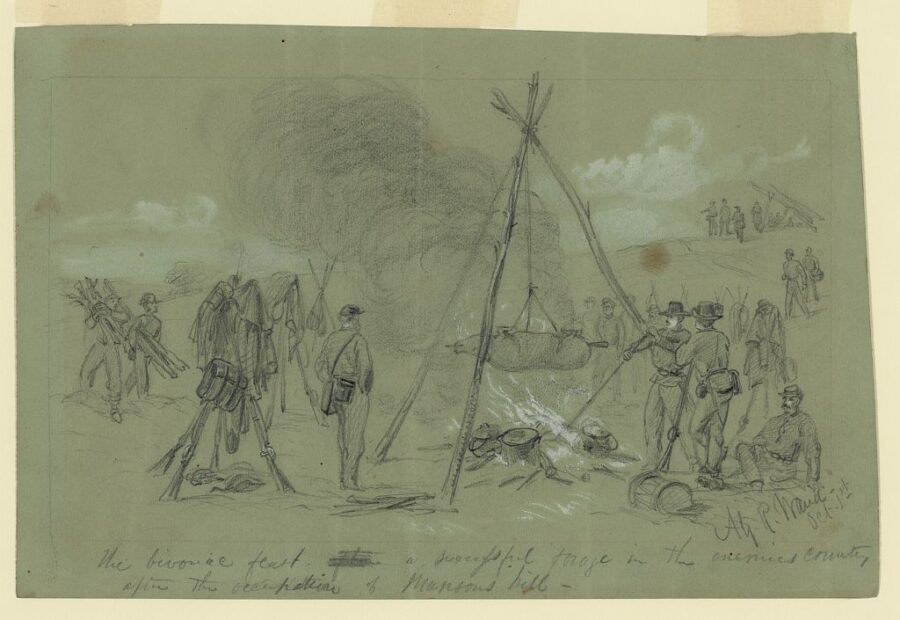
Union soldiers feast after a successful forage in the enemy country during the war’s early months in this sketch by Alfred Waud.
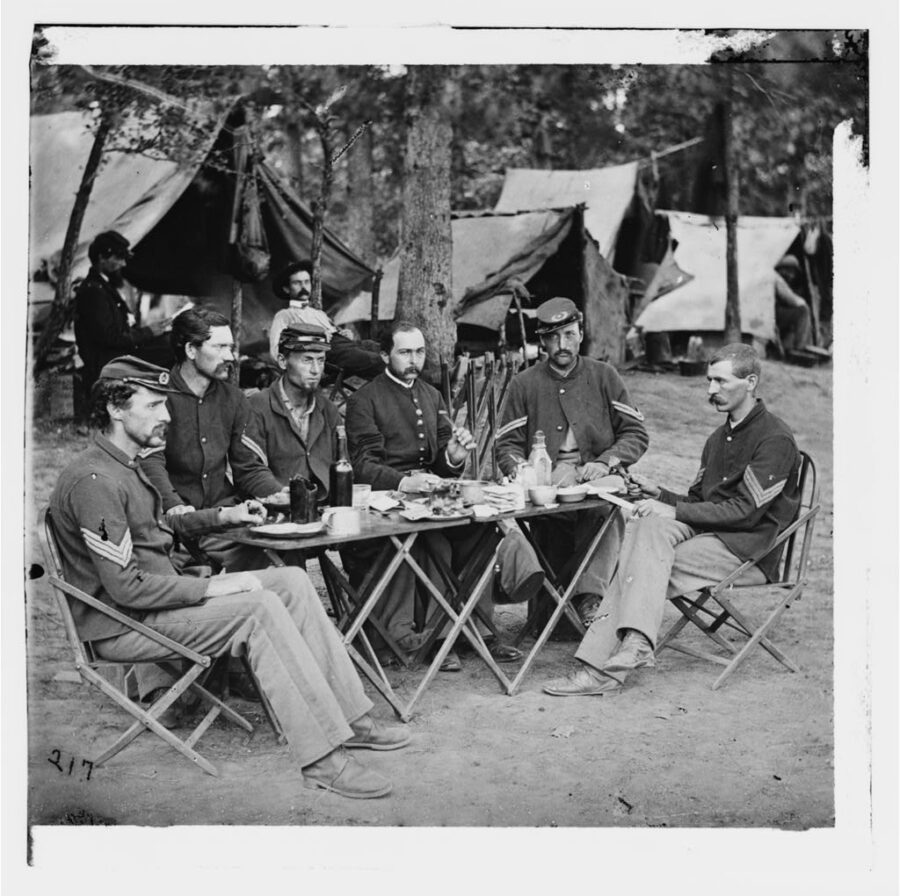
Non-commissioned officers of Co. D, 93rd New York Infantry, dine in the regimental camp at Bealeton, Virginia, in this image from August 1863.
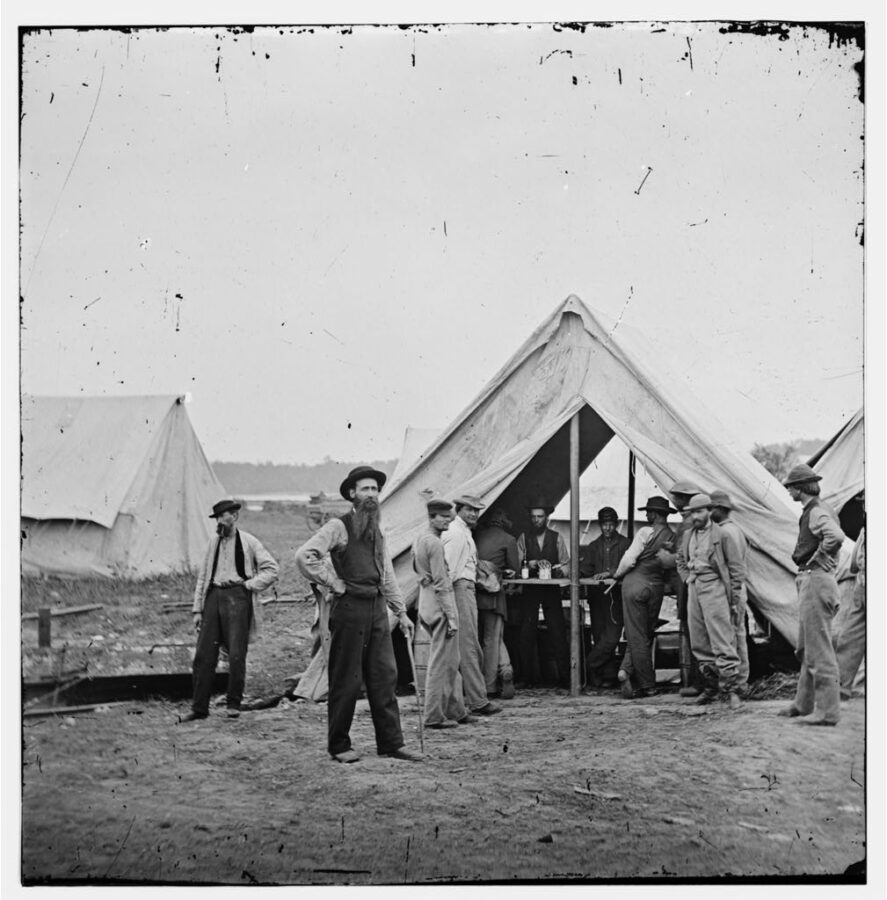
Men mill about a sutler’s tent in the camp of the Second Division, IX Corps, Army of the Potomac during the Siege of Petersburg in November 1864.
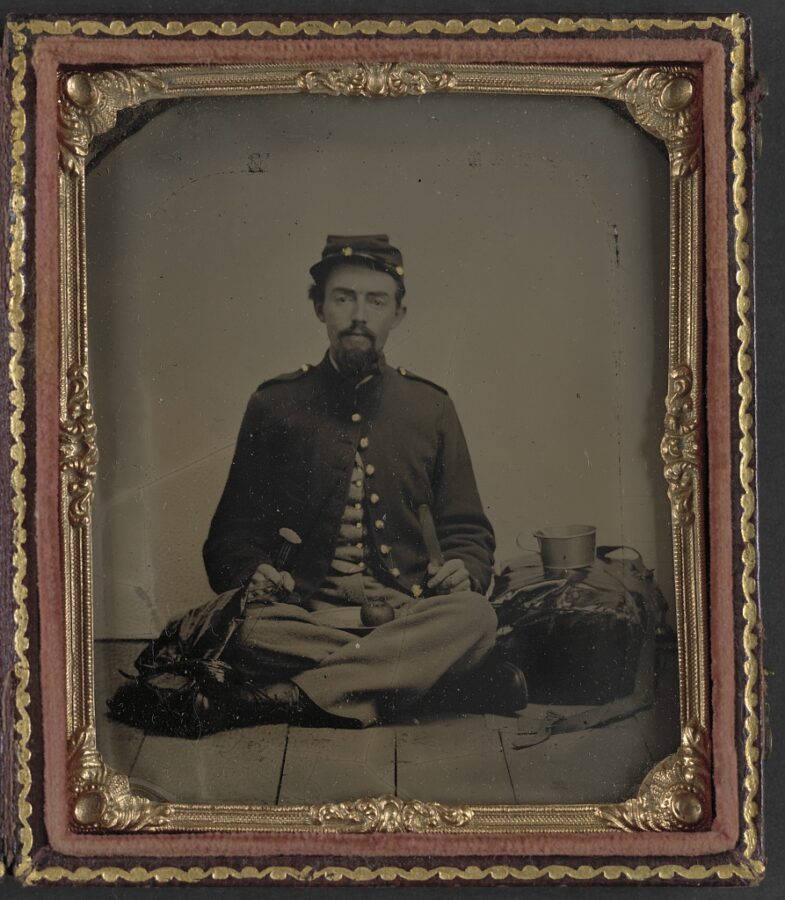
An unidentified Union soldier poses for the camera armed with fork, knife, and plate—ready to eat a slice he’s just cut from the apple on his lap.
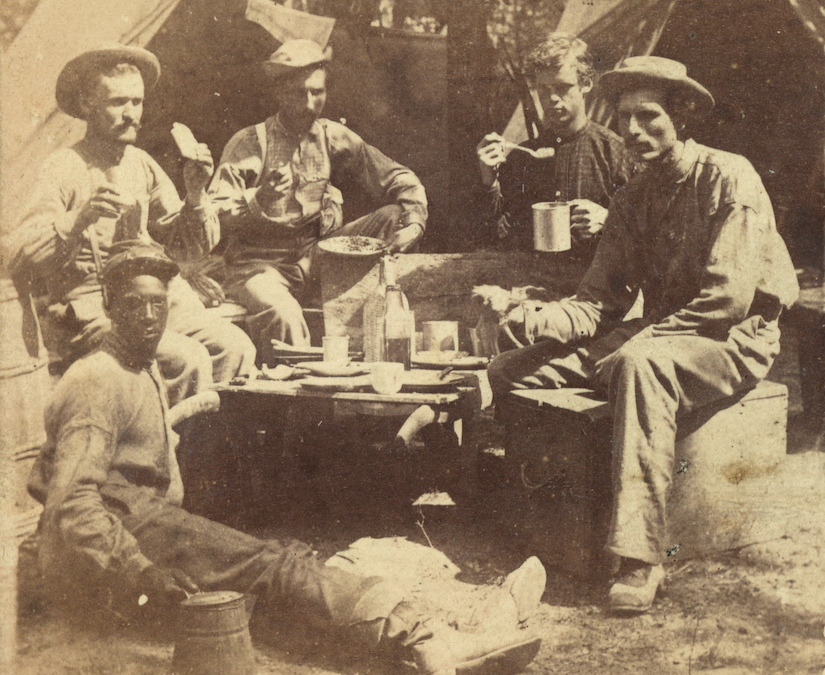
“The way they cook dinner in camp” is the title given to this wartime image published by E. & H.T. Anthony & Co.
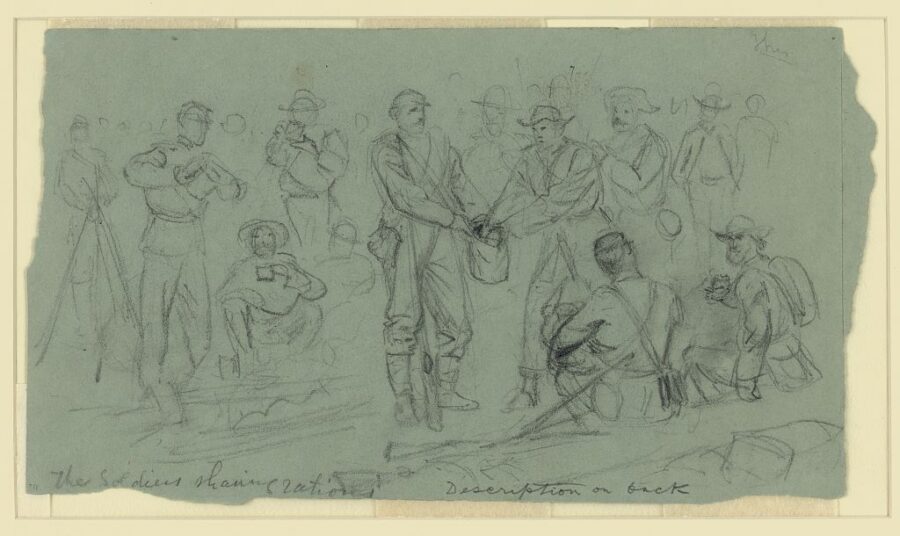
Artist Alfred Waud captioned this sketch, which he titled “The Soldiers Sharing Rations,” of men of the Army of Northern Virginia who surrendered in April 1865: “The rebel soldiers were entirely without food and our men shared coffee and rations with them.”
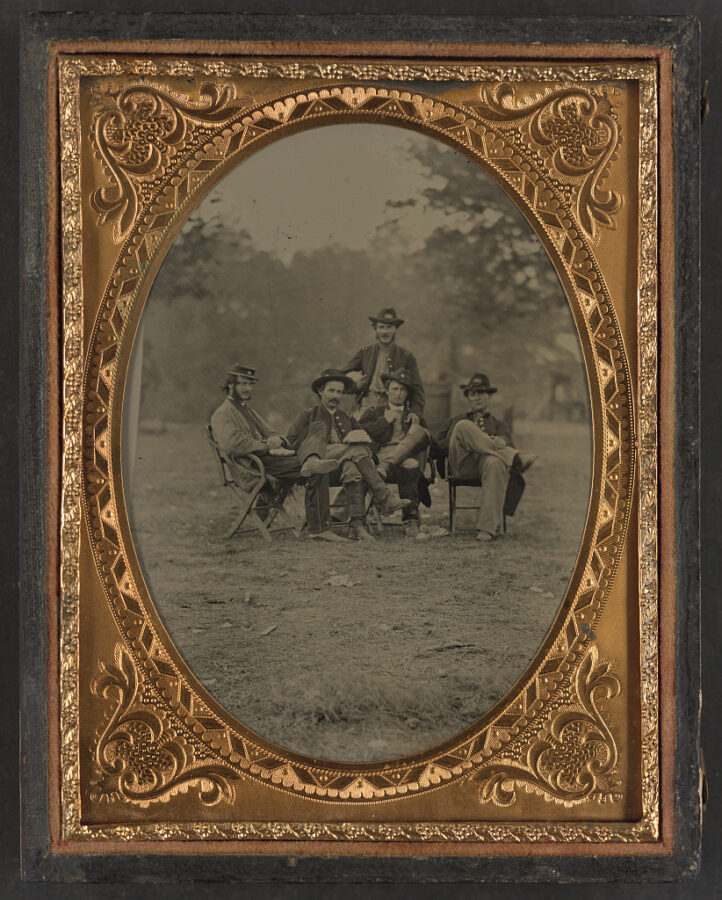
Unidentified Union officers sit outdoors with food on their laps in this undated wartime image.
